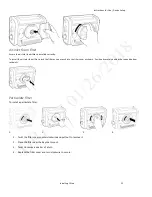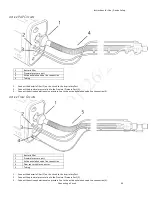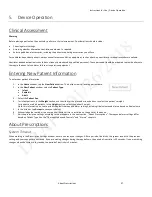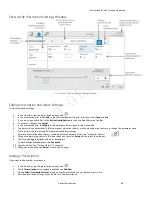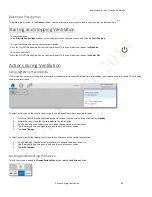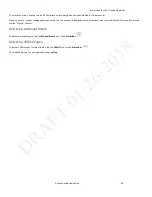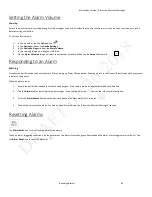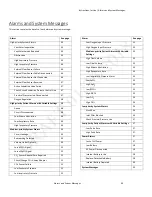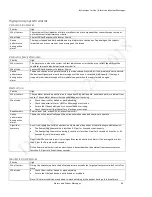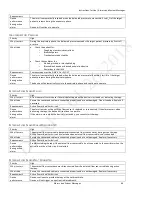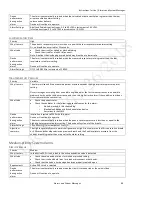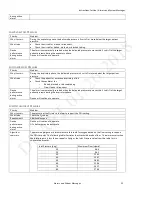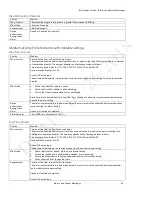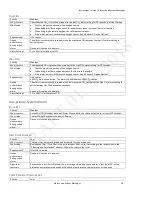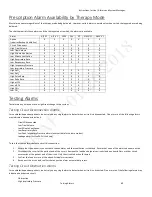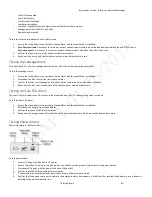
Instructions for Use | Alarms and System Messages
Alarms and System Messages
46
Requirements
Device
performance
during active
alarm
The alarm is automatically resolved when the delivered pressure comes within 5 cmH
2
O of the target
patient pressure during the expiratory phase.
Device will continue to operate.
H
IGH
I
NSPIRATORY
P
RESSURE
Priority
High
Why it occurs
During the inspiratory phase, the delivered pressure exceeds the target patient pressure by 5 cmH
2
O
or more
What to do
•
Check the patient for:
o
Coughing or excessive secretions
o
Bronchospasms
o
Tracheotomy tube stability
•
Check the ventilator for:
o
Kinked, pinched, or blocked tubing
o
Blocked leak device or blocked exhalation device
o
Secretions in the HME
Requirements
Therapy mode must be SIMV-VC or A/C-VC
Device
performance
during active
alarm
The alarm is automatically resolved when the delivered pressure falls within 5 cmH
2
O of the target
patient pressure during the inspiratory phase.
The device will automatically cycle to the expiratory phase and continue to operate.
E
XTERNAL
F
LOW
S
ENSOR
F
AILED
Priority
High
Why it occurs
A flow sensor offset or sensor failure is detected when the device is in standby or delivering therapy.
What to do
Ensure the sensor and cable are connected properly and are not damaged. Clean if needed. Replace if
necessary.
Requirements
Active flow or dual limb circuit
Device
performance
during active
alarm
The alarm remains active until the flow sensor is replaced or reconnected. If the alarm occurs when
delivering therapy, the device will continue to operate.
If the alarm occurs when the device is in standby, you cannot start therapy.
E
XTERNAL
F
LOW
S
ENSOR
C
ABLE
D
ISCONNECTED
Priority
High
Why it occurs
The external flow sensor cable becomes disconnected from the ventilator during active therapy.
Active flow or dual limb circuit is selected and an external flow sensor cable is not connected.
What to do
Ensure the sensor and cable are connected properly and are not damaged. Replace if necessary.
Requirements
Active flow or dual limb circuit
Device
performance
during active
alarm
Prohibits starting therapy if the external flow sensor cable is not connected to the ventilator when the
active flow or dual limb circuit is selected
E
XTERNAL
F
LOW
S
ENSOR
N
OT
C
ONNECTED
Priority
High
Why it occurs
The external flow sensor becomes disconnected from the external flow sensor cable during active
therapy.
What to do
Ensure the sensor and cable are connected properly and are not damaged. Replace if necessary.
Requirements
Active flow or dual limb circuit
Device
performance
Device continues to provide therapy at the set breath rate.
Device will not trigger on a patient initiated breath.

